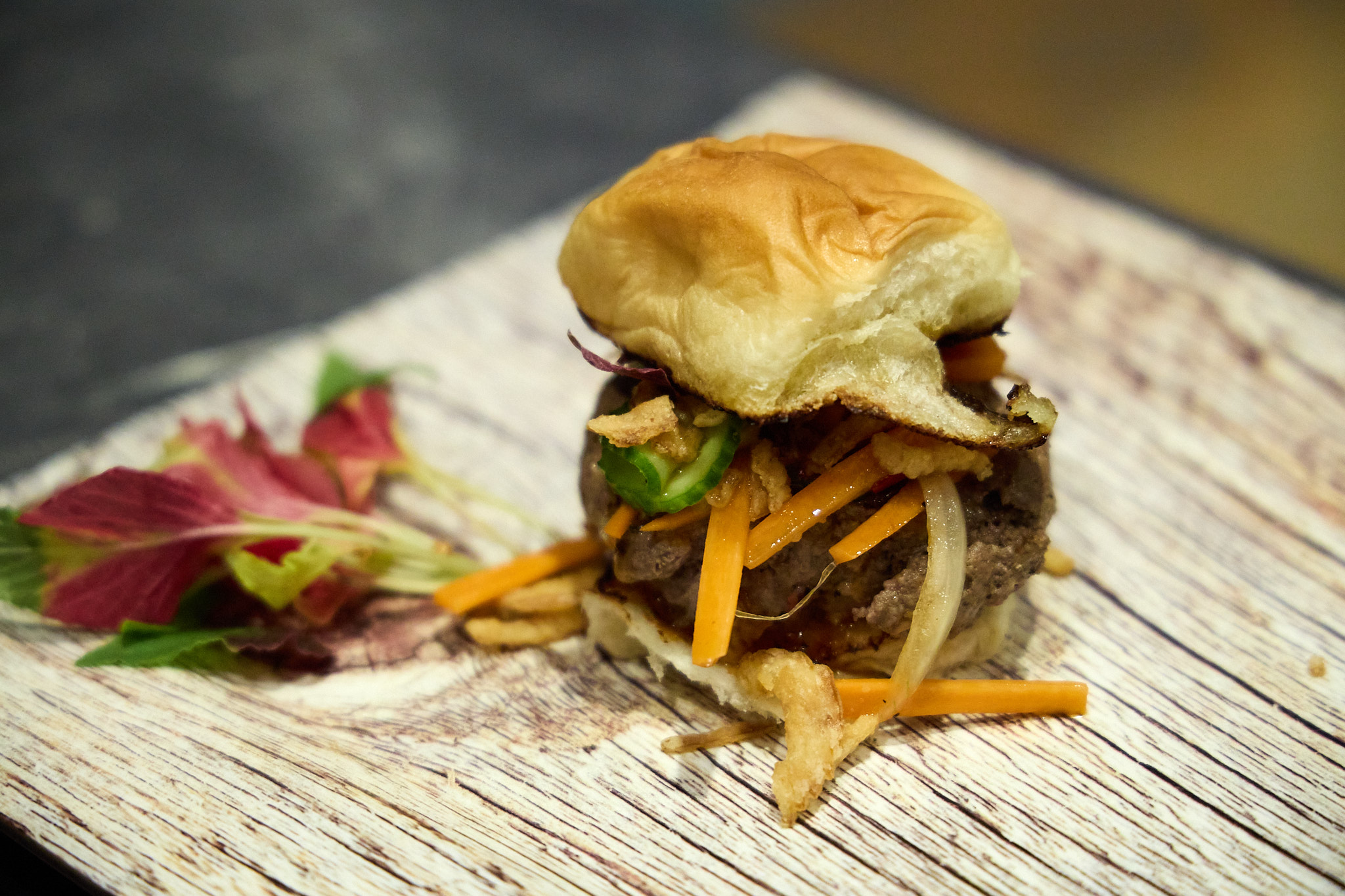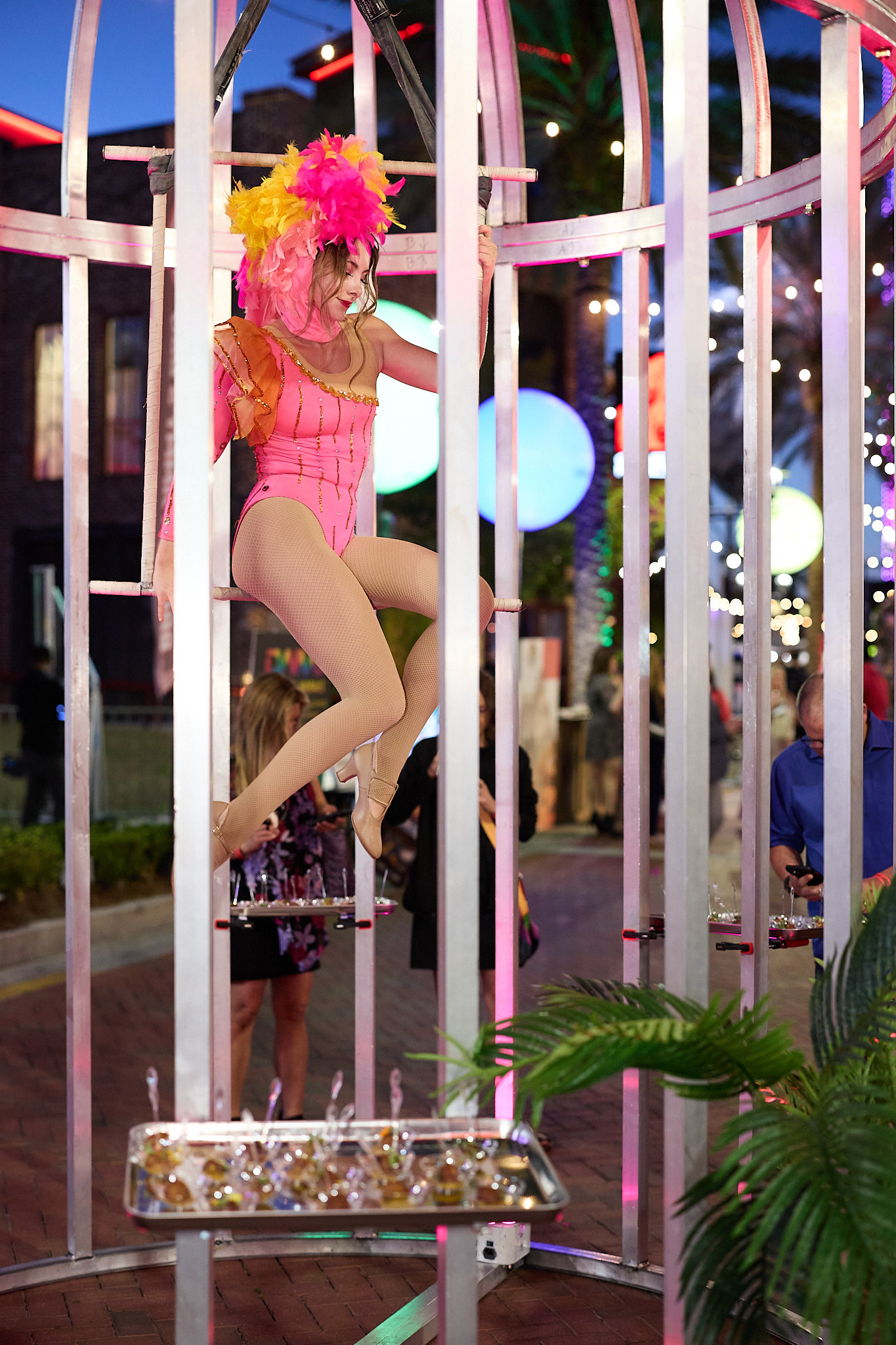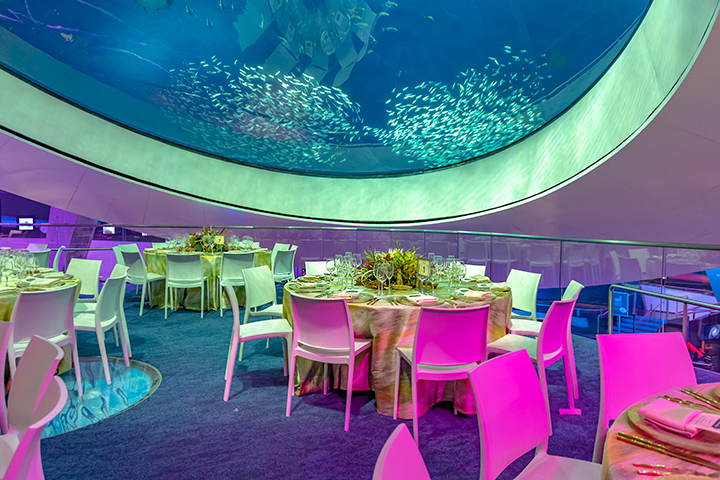Innovative food and beverage isn’t necessarily required for a successful event, but it should be. Since the re-emergence of events post-pandemic, eventgoers are expecting bold, artistic catering that anchors them in the event experience and provides social media-worthy subject matter.
2023 is flying by, and as we approach the midpoint of the year, we’re taking a look at rising food fads, trends, and megatrends. Between those seen at this year’s Catersource + The Special Event (CS+TSE), held this past March in Orlando, and those by our catering and event beacons, here are the latest trends you should incorporate into your events.
1. Non-alcoholic cocktails

Attendees of the Venue Tour tried the MEZZmerizing Spritzer (muddled cucumber, lemon juice, lime juice, agave, club soda, and cucumber slice). Photo courtesy WASIO Faces/SpotMyPhotos
Whether it’s mixing in mocktails between alcoholic beverages, being sober, avoiding alcohol for pregnancy, or just not drinking for the night, there’s a variety of reasons people are choosing non-alcoholic (NA) beverages. But that doesn’t mean people don’t want the complexity of a craft beverage.
With the “sober curious” movement on the rise, NA drinks are stepping into the spotlight. Alcohol-free distilled spirits, wine, and beer are on the market, and non-alcoholic content is trending. In his session at this year’s CS+TSE, Caterers Assemble! Tantalizing Trends, Captivating Concepts, Inspired Interactivity, Michael Stavros (M Culinary Concepts) talked about how many non-alcoholic spirits are available and how well they’re made. “You’re still enjoying that same flavor profile.”
NA bars and bottle shops are beginning to pop up on the map as well. Places like Spirited Away (NYC), Awake Denver (Denver), Marigold (Minneapolis), and Sans Austin (the first non-alcoholic bar in the United States, located in next year’s CS+TSE destination of Austin, TX!) offer a variety of zero-proof spirits, wines, beers, mixers, and cocktails. With so many products on the market and shops across the U.S., it’s clear that non-alcoholic beverages are in demand.
“It’s hard to find your space socially when it isn’t the normal, it’s not the norm to not drink,” said Marigold owner Erin Flavin in an interview with WCCO 4 News. “I think sobriety is a total spectrum, and people should feel accepted anywhere they fall in that line.”
Throughout the week, CS+TSE attendees were offered choices between alcoholic and non-alcoholic beverages, like the MEZZmerizing Spritzer offered at The MEZZ during the venue tour, which featured muddled cucumber, lemon juice, lime juice, agave, and club soda, and was garnished with a cucumber slice.
2. Global influence
We are a globalized society, and as the internet gives us greater insight into each other's worlds, cuisine from around the globe is escalating in demand. Not only that, people want the food of their own cultural traditions served in an authentic, respectful way.

(Above) A bison meatloaf slider with a banh mi slaw and Thai chili sauce from this year’s DICED competition. Photo courtesy WASIO Faces/SpotMyPhotos
(Below) Spanish-influenced paella was a hit at the Closing Night Celebration’s International Block Party. Photo courtesy WASIO Faces/SpotMyPhoto

Food with a Pan-Asian influence is especially popular. From dim sum to bao to curry to canned fish, traditional Asian dishes are populating menus. But even though traditional food is popular, so is Asian fusion and general Asian ingredient influence. Attendees on the event venue tour, for example, were served tuna tacos where a wonton shell took the place of a tortilla. There were also a couple of Asian-inspired burgers created during this year’s DICED competition: one entry was an Asian-style burger with Korean barbecue sauce, kimchi slaw, and rice wine pickled cucumbers on the side; another, a bison meatloaf slider was served with a banh mi slaw and Thai chili sauce.
The Closing Night Celebration, which wrapped up this year’s conference, was themed “International Block Party,” and featured food from all around the world. On the map was South America (empanadas, ceviche shooters, and paella); Africa (chicken kabobs with preserved lemon and olives, Moroccan flatbread); Europe (tapas, bruschetta, and wine served in a Catalonian narrow-spouted Porrón pitcher), Asia (hibachi, Korean BBQ short ribs, and steam buns); and Australia (canapé-style avocado toasts and shrimp on the barbie).
3. Comfort food
Trying new food is always delightful, but sometimes we just want comfort food. From childhood classics to lazy day treats, comfort food options are a must—and the way to serve those comforting classics is with innovative design.
Art of Catering Food, a chef-focused conference held immediately before CS+TSE, served attendees plenty of elevated comfort food, like beautifully decorated doughnuts by Chef Nettie Frank, risotto-style pasta from executive Chef Charlie Schaffer, and mini chicken and waffle cones with mashed potatoes from Chef Chris Towne.

(Above) Chef Nettie Frank’s blueberry cobbler doughnuts were a hit during Art of Catering Food 2023. Photo courtesy Kathleen Stoehr
(Below) Marcia Selden Catering & Events serves their own version of classic comfort food. Photo courtesy Marcia Selden Catering & Events

Stavros also discussed reimagining comfort food, like reinventing chicken pot pie as a canape in a puff pastry. He pointed to Marcia Selden Catering & Events for their elevated fast food in nostalgic packaging. “Never ever doubt nostalgia,” he told his audience.
4. Unique serving vessels
We all know how the pandemic forced caterers to turn to creative individual servings of food. But while pandemic restrictions for events have faded, the creativity of individual servings has stayed trendy, evolving into quests for unique serving vessels.

(Above) The arancini served at the Closing Night Celebration was held by spoons in a server-held vertical board. Photo courtesy WASIO Faces/SpotMyPhotos
(Below) Martini glasses held apps instead of beverages at the Closing Night Celebration. Photo courtesy WASIO Faces/SpotMyPhotos

At Blue Elephant Events & Catering, thrifted odds and ends, like empty light bulbs, tea candle trays, mini martini glasses, paper cones, and even mini plastic cocktail shakers, are given second life as serving vessels.
During her session Culinary Inspiration & Trends with Andrea Correale, Andrea Correale of Elegant Affairs showed examples of their unique serving vessels, like salads and bar snacks served in test tubes, a veggie salad served in a wooden garden box, mini charcuterie bites served on upright-standing forks, and even edible bowls made from bound and molded seeds.
Attendees of CS+TSE got to experience some of these fun vessels in real life:
- Charcuterie in paper cones
- Apps served in martini glasses
- Mini deep-dish handled trays
- Mini serving walls held by waiters with slots for individual spoons holding small bites
Go to the Catersource blog for more ideas on unique serving vessels.
5. Interactive stations
Instead of letting guests grab food from a static station, themed interactive service is on the rise. These stations often offer communal, customizable menu options, like a make-your-own chocolate bar station, where guests can choose flavors and toppings. Build-your-own stations can apply to a multitude of foods: s’mores, tacos, waffles—it's only a matter of getting creative.

(Above) For Catering by Design’s gardening station, a “gardener” serves plated dishes from the seeds the guests “planted,” all handed up by servers underneath the station. Photo courtesy Catering by Design
(Below) At this year’s Closing Night Celebration, attendees could grab appetizers from a birdcage where an acrobat performed. Photo courtesy WASIO Faces/SpotMyPhotos

There are also more theatrical approaches, like a CATIE award-winning “gardening” station from Catering by Design where guests “planted” seeds that “grew” the dishes on the menu (for more on this and other action stations from this year’s CATIE awards, read the article on presentation from Catersource).
Even this year’s Closing Night Celebration took a theatrical approach to food stations: as small as scanning a QR code to learn more about the food to an entire acrobatic performer perched (literally—in a giant birdcage) next to some small bites.
6. Sustainable eating
Catering is an easy place to make a difference in environmental sustainability, which is why we hope this trend is here to stay. The 2023 Food & Beverage Trend Report from SupHerb Farms states that “sustainability efforts are now table stakes for all food industry players, particularly as Gen Z and Millennials place greater importance on climate change as a purchase driver. Sustainability will impact every aspect of the food industry, from ingredients and production to packaging and shipping.”
Food waste is a major contributor to event-produced carbon emissions (turn to page 20 for more on that). On top of that, event attendees are increasingly requesting plant-forward options. With vegetarian, vegan, flexitarian preferences, and more, it’s important to be creating clear communication between your client, their guests, and your caterer.

In his session, Michael Stavros discussed how M Culinary Concepts has partnered with Alvéole, a company that installs beehives on the properties of schools and businesses. Photo courtesy Alvéole
Look for caterers who are taking sustainable actions. This could mean that they source their ingredients sustainably, from local and ethical distributors. Stavros gave his session audience several ideas to create sustainable catering: raise bees, garden their own food, use upcycled or imperfect food, donate leftovers to redistribution organizations. By working with a sustainability-minded caterer, you can be sure you’re providing your clients with responsible options.
7. Experiential Dining
We all know that “immersive” is the word of the year. But as you plan your events, don’t forget to include food and beverage in the experience! The SupHerb Farms report also notes that “high-impact sensory experiences in foods and beverages will offer consumers escape from ongoing chaos, uncertainty, and instability. Operators and manufacturers will experiment with ingredients and preparations that create amped-up textural, visual, olfactory, and auditory experiences.”

Dining at the Frost Museum fundraiser took place in the Frost Science Center’s Gulf Stream Aquarium, where guests could watch sea life glide overhead through an Oculus lens. Photo courtesy Lazaro Llanes
In agreement, an article from PureWow notes that “searches for ‘underwater restaurants’ were up 263 percent and searches for ‘dinner theaters’ were up 109 percent,” the past year. People are looking for an eating experience. This can include elements like performers, tableside service, multi-sensory dining, dining in the dark, and even AR technology.
A great example of this is last year’s fall fundraiser for the Phillip and Patricia Frost Museum of Science. The dinner portion of the event was intricately tied into the overarching event theme, An Evening of Discovery: Digging Deep into Paleontology, with “carnivore” and “herbivore” options and even a “fossil” dessert.
Get more ideas from our blog post “Incorporate Immersive Dining Trends into Your Next Event.”
As you plan your upcoming events, take a page from the trendsetters’ book and try some of these popular elements!





